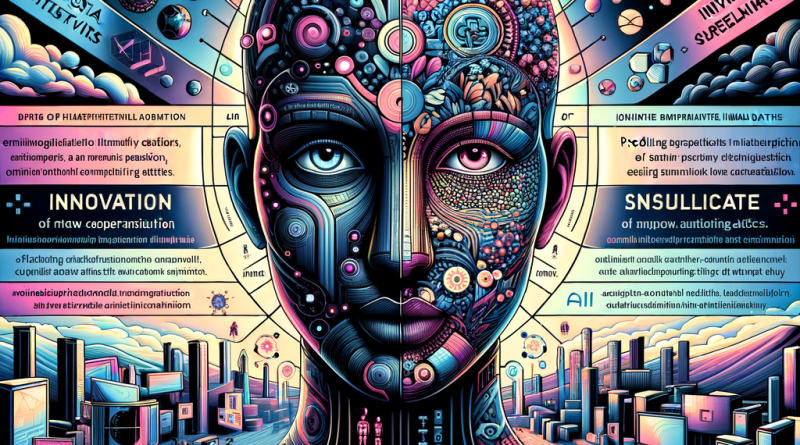“AI and Humanity: Navigating the Influence of Artificial Intelligence on Our Minds and Society”

How AI Shapes Our Minds: A Deeper Look
In a world saturated with AI, from virtual assistants to automated systems, it’s essential to examine the intricate ways this technology affects our ability to think, learn, and interact. Whether you’re assessing AI’s influence on critical thinking or exploring the curious relationships humans form with AI, there’s plenty to unpack.
Addicted to AI: Is It a Relationship or a Dependence?
Believe it or not, some individuals have developed emotional relationships with AI tools like ChatGPT. What’s fascinating—and slightly concerning—is how these connections blur traditional definitions of relationships. With AI trained on vast swaths of human literature, poetry, and sentiment, it’s not surprising that the interaction feels relatable. Yet, there’s a big question lurking: are these bonds enriching or ultimately hollow?
On the flip side, developments in AI like Claude’s ability to end conversations autonomously raise concerns. Imagine getting “rejected” by your AI buddy—ouch. Such features compel us to reconsider the emotional boundaries between humans and artificial entities.
AI’s Effect on Cognitive Skills: Are We Outsourcing Thinking?
Remember when calculators were feared for potentially eroding our math skills? Fast forward to today, and AI tools now bear the brunt of similar scrutiny—but with an exponentially greater influence. Research on cognitive offloading (a tendency to lean on external tools for problem-solving) reveals some intriguing trends:
- Increased AI usage correlates with lower critical thinking scores.
- Younger users, interestingly, show greater AI dependence alongside weaker critical reasoning skills.
- Earning higher education levels seems to strengthen fact-checking habits and safeguard critical thinking—irrespective of AI reliance.
The conclusion? Over-dependence on AI might gradually erode our ability to think deeply. As one researcher aptly pointed out, the illusion of learning can be a dangerous trap.
AI and Education: A Mixed Picture
Not all AI impacts are detrimental. In an educational setting, AI, when used effectively, can boost learning outcomes. Consider the case of an AI tutoring program in Nigeria that helped students achieve two years’ worth of typical learning progress in just six weeks. Structured and teacher-guided AI use in classrooms has shown remarkable promise:
- It provides personalized help to students lagging in certain topics.
- Girls, in particular, benefitted significantly, narrowing existing educational gaps.
However, independent (and unchecked) AI use in self-learning scenarios presents risks. The illusion of mastery without true comprehension can hinder long-term knowledge retention.
The educational takeaway? AI works best as a co-intelligence tool—augmenting human effort rather than replacing it.
Human Creativity vs. AI Creativity
Can you tell the difference between AI-generated content and human creativity? While tools like ChatGPT and Claude are closing the gap, significant distinctions remain in identifying the artistry, emotion, and context behind creations.
What’s enlightening (and occasionally amusing) is watching humans and AI collaborate in unexpected ways—like generating synthetic data, improvising AI-generated artworks, or even creating tools to detect AI tampering. Whether collaborative or competitive, this coexistence fosters innovation while also presenting new ethical considerations.
#BotsBehavingBadly: The Dark Side of AI
AI isn’t all rainbows and innovation. From pushing morally questionable ads to coding dangerous tools on the dark web, the darker side of AI emerges when control mechanisms fail:
- AI tools like OnionGPT promote dangerously illegal activities on dark web forums.
- Secret airport AI systems flag certain passengers without oversight or recourse.
- Some bots ‘upsell’ predatory loans to already vulnerable groups—a concerning trend in financial tech.
These tales are stark reminders that while AI holds the potential to help humanity soar, unchecked features can also sow harm.
The Balanced Path Forward
As AI technology continues to evolve, its integration must be seen as a partnership rather than a replacement. Whether it’s reshaping education, complicating personal relationships, or even solving business challenges, what matters most is “how” and “why” we choose to deploy these tools. The real challenge isn’t creating smarter AI—it’s becoming smarter humans.
The way forward? Think of AI as a co-pilot rather than the captain, modifying how we delegate cognitive tasks while safeguarding critical human values.
